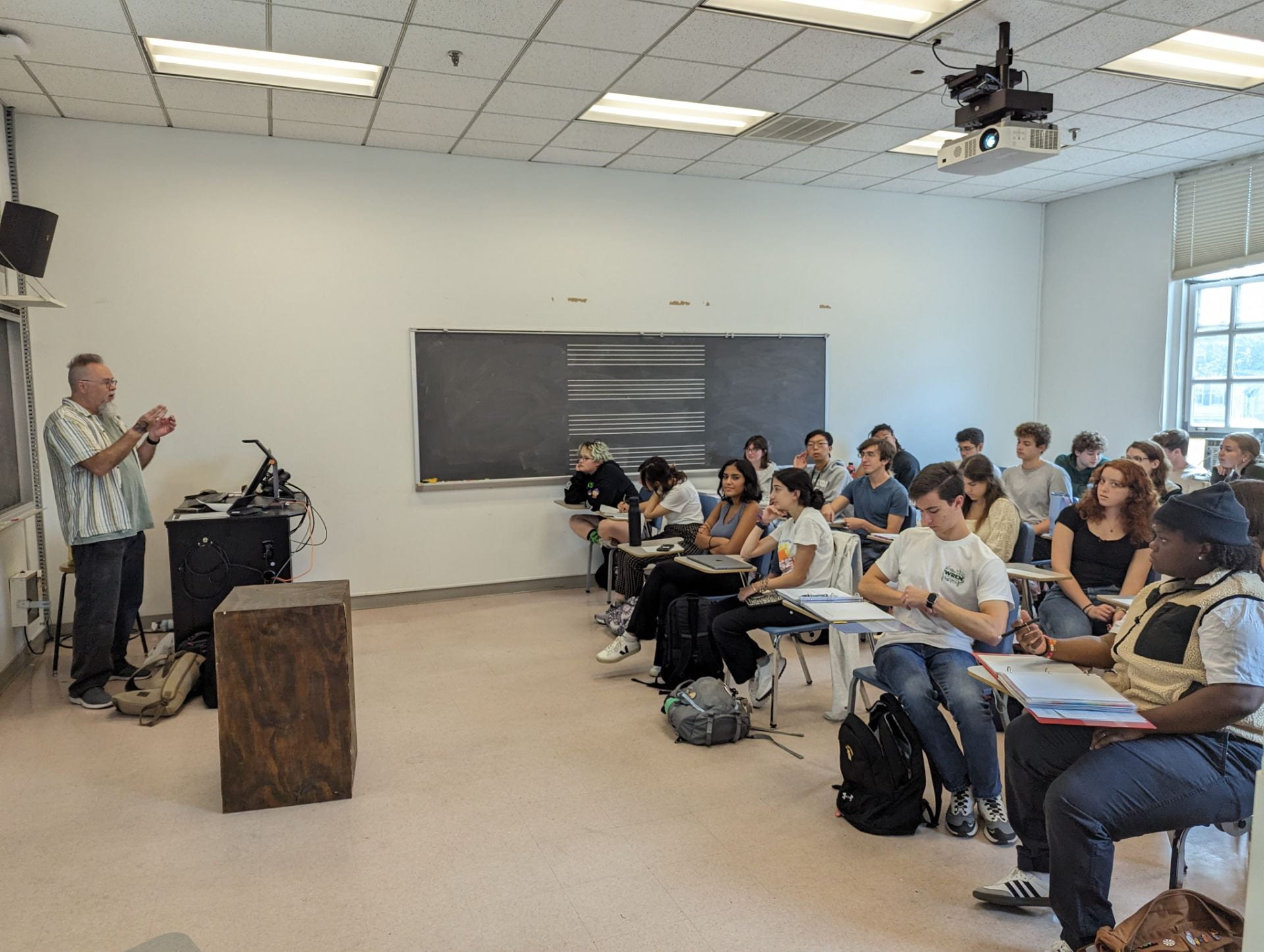What’s in a name? Roy Petersen’s Storytelling Workshop

Share the story of your name. This was the first exercise that STLI’s Senior Educational Design & Production Specialist, Roy Petersen, presented for the students in his workshop. The students quickly split into groups, sharing all sorts of explanations about how their name came to be–whether it was someone’s mother growing up in Japan and being inspired by the culture, or someone else’s parents simply liking the sound of their name.
The students completed two more collaborative brainstorming activities, after which Roy asked for reflections–did the students feel as though they were being interviewed by each other, or simply sharing and conversing? The students all unanimously agreed that they felt like they were voluntarily sharing their stories. But the question launched a discussion about the difference between interviews and regular conversations, where they overlap. Students agreed that no matter the scenario, establishing a rapport with the other person plays a significant role in a fruitful discussion.
These activities were all a segue into the workshop’s true purpose: the art of storytelling. One would assume that such a workshop would be presented to students in a literature or creative writing course. Interestingly, though, this was a French COLL 100 called Born This Way: Gender/Sexuality, taught by Professor Deborah Lee-Ferrand. Professor Lee-Ferrand had assigned her students a storytelling project, for which Roy was giving the workshop.
To help the students with brainstorming and planning for their projects, Roy taught them about the storytelling process used by Pixar Studios in the creation of their movies. This process consisted of six steps, or beats, all of which are necessary to create a compelling story: setting the scene and introducing the characters, showing the characters’ every day life, the inciting incident that changes everything, then two more beats dedicated to the rising action, and then finally the resolution, in which all loose ends of the story are tied up.
But what about coming up with a solid, compelling idea in the first place? Roy played a video by Jeremy Higham for the students. Higham is an accomplished filmmaker who was also Roy’s former mentor. In the video, Higham explains the concept of the “Nines”–this consists of coming up with nine things that are significant to your story, and then consolidating those nine things into three circles: the beginning, middle, and end of your story. Students were very engaged with this method, which provided them a structure for their ideas but not so much as to kill their creativity.
Want to learn more? Interested in having a storytelling workshop in your own course? Contact us at STLI@wm.edu.